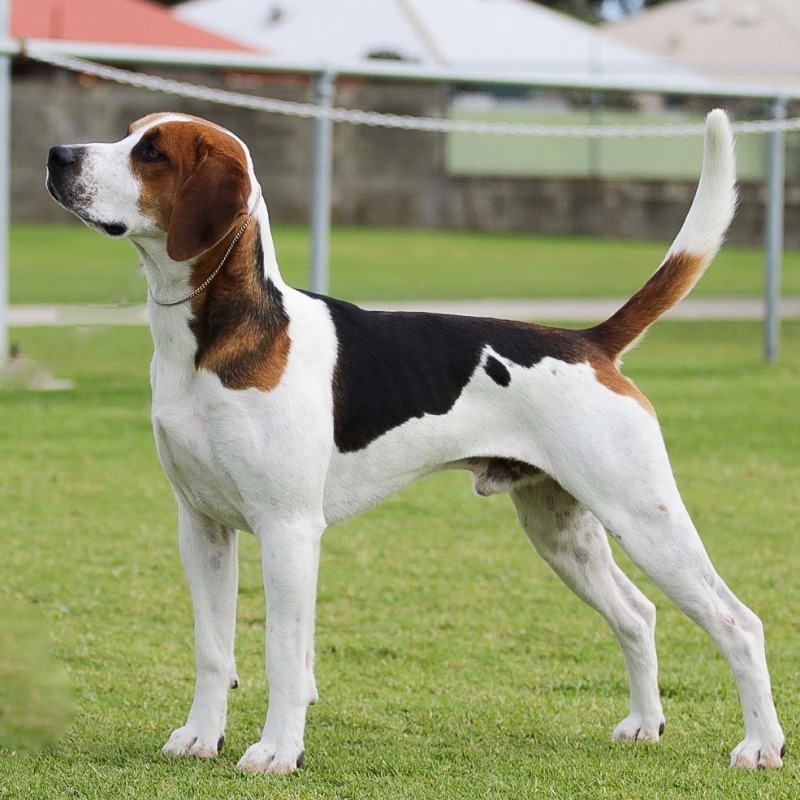Breeds
Harrier

GROUP 4 - HOUNDS
Brief History
Harriers evolved in England through the eighteenth and nineteenth centuries as a hound used to hunt small game, mainly hare, and be followed by people on foot. They were a pack hound and many large packs were registered with the Masters of Foxhounds Association, which governed fox and hare hunting in the 1800’s. Numbers have declined significantly since then and the packs disbanded, but a few people still maintain the breed.
Average Life Span
When considering a dog please realise that you are taking it on for its lifetime.
The average life span is 12 to 15 years.
Temperament
Friendly, social dog. Should not be shy.
General Breed Description
The Harrier closely resembles a small English Foxhound and is a handsome, medium sized, strong, scent hound with plenty of stamina and energy. His pack hound origins mean he needs company and gets on well with other dogs and with humans, and he does not do well if isolated. He is an active dog but also content to be steady and quiet in the house with a family, so is a good indoor/outdoor dog. Harriers need firm but gentle and consistent training, which should start when they are young. They can learn easily and become generally obedient, but his scenting and hunting instinct is still strong and means he will not stay home without good fencing and might not come back when called.
Harriers are usually combinations of black, tan and white.
Coat and Care Requirements
The short, dense, weatherproof coat simply needs a good brush weekly and an occasional bath. Regular exercise such as a daily walk is recommended, and will probably need to be always on a leash.
Size
Height: Males and females 48 to 53cms (19-21ins).
Health
All breeds have individual health issues. When speaking to breeders it is recommended you enquire about breed’s health and what health testing the breeder does. The harrier is generally a healthy dog. However, health conditions will occur occasionally.
Suitability
Harriers make good pets for individuals or families who can provide company and security for them.
In Conclusion
Now you know a little more about this breed. If you have decided this is the dog for you and wish to investigate further, please contact the Breed Club or Dogs Victoria. They will be able to give you information about available puppies and also suggest dog events where you can see the breed and speak to breeders. In this way you will gain a better perspective of the breed and its needs. With any breed of dog, it is important to research and determine suitability for your lifestyle before committing to a puppy which will be a part of your family for many years to come.
Whilst many breeds are recommended for families, it is imperative that when children are with dogs they are supervised at all times. Basic obedience training is a vital part of dog ownership.
Dogs Victoria is about the responsible ownership of all dogs and in particular the preservation of pure breeds.
Link to Dogs Australia Breed Standard https://dogsaustralia.org.au/breed/detail/140
Breeders
Sorry, there are currently no breeders advertising for this breed. If you are a registered Dogs Victoria breeder and wish to advertise here please create an advertisement here.



